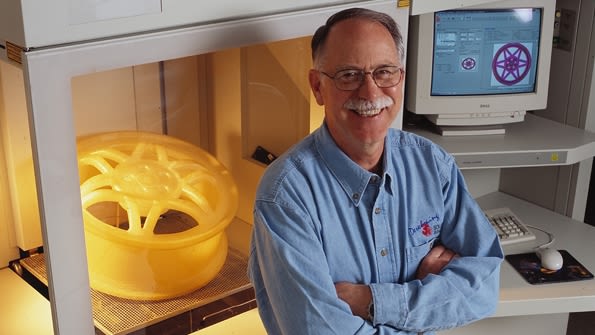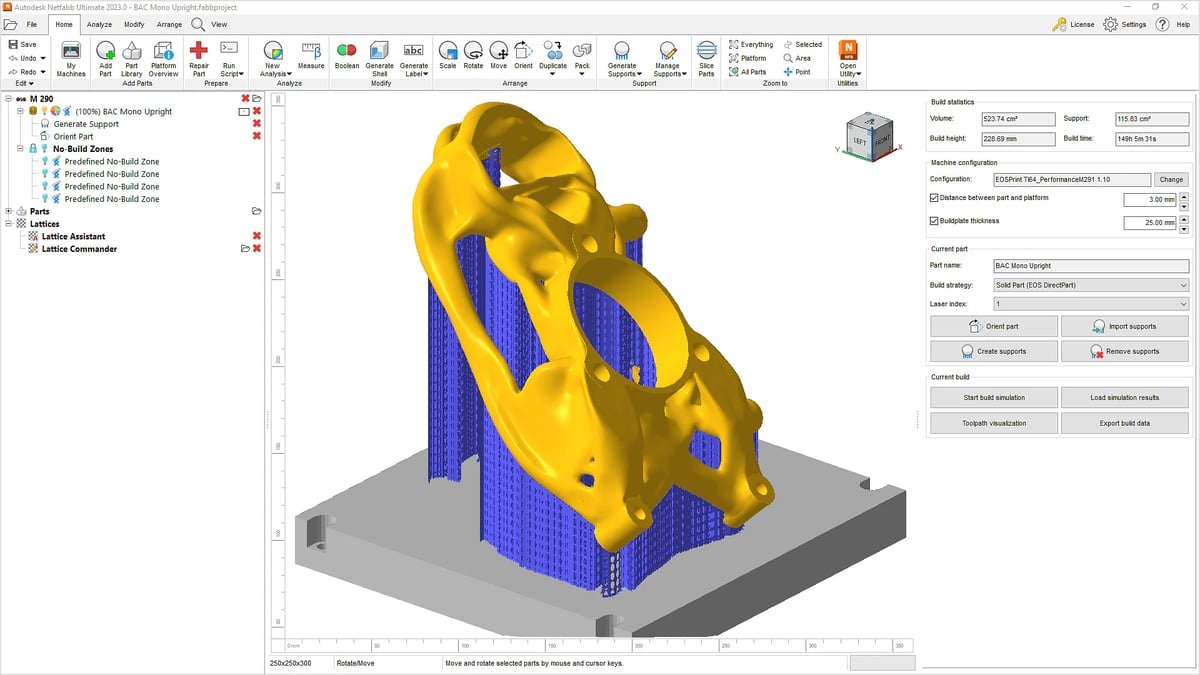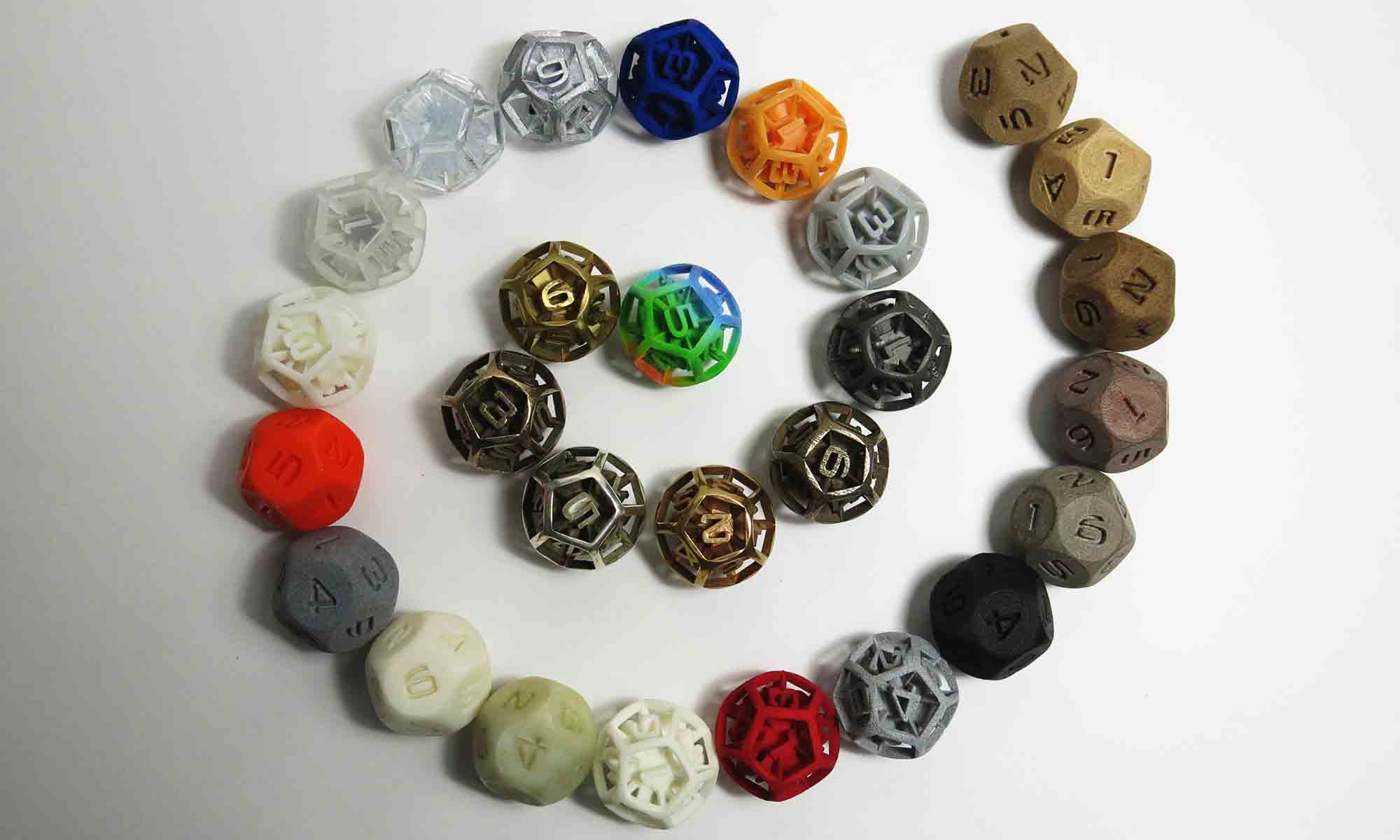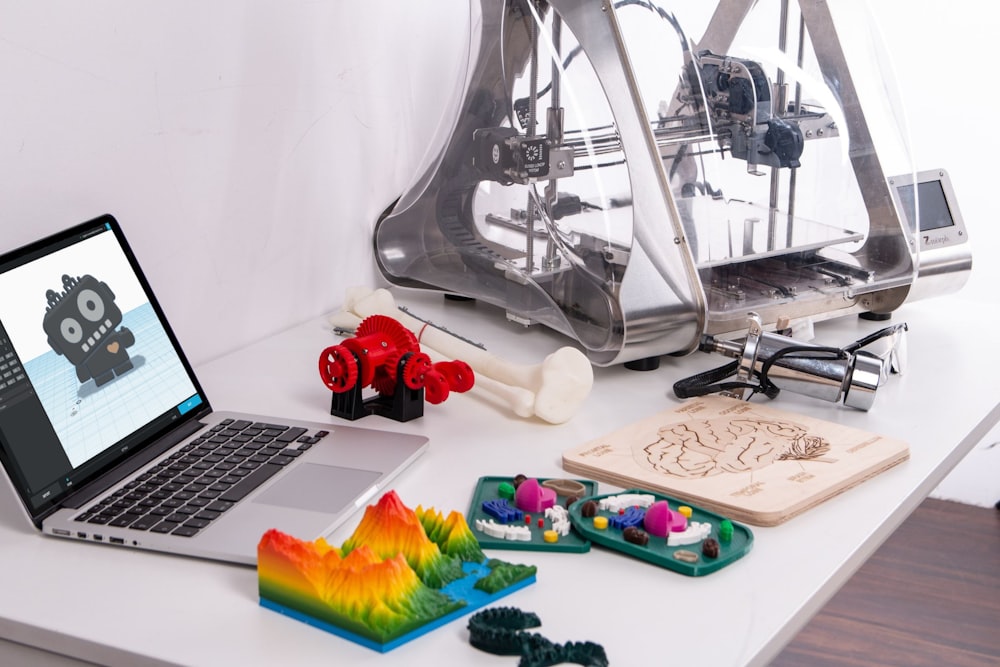If you’ve ever wondered how objects can be printed just like pages in a book, then you’re in the right place. 3D printing might sound like something from science fiction, but it is a real and exciting way to make all sorts of things, from small everyday objects to toys and even spaceship parts.
In this series we will start from the very beginning. You will find out what 3D printing is, where it came from and why it is so important and keeps growing. We will talk about the history of it, all the different kinds of 3D printers and materials as well as about the software needed to make whatever you imagine!
We’ll keep it straightforward and easy for you to understand; all you need is curiosity. By the end of this first article you will have a solid understanding of the basics of 3D printing and be ready to learn more about how to do it yourself. So let’s get started!
What is 3D printing?
3D printing is the process that involves software and hardware that turns your computer drawings into real solid things that you can hold and use. It’s a bit like building something out of plastic toy bricks, but instead of snapping bricks together, a machine stacks up thin layers of plastic or other materials following a specific pattern that you give it.
So, how does this work? It all starts with 3D design on your computer - this could be anything from a simple figurine to a piece of an intricate machine. Such printable models can be made from scratch by you if you have the appropriate skills required for 3D modeling, or could be acquired from 3D models marketplaces like CGTrader. Once you have a model that you want to print, you send it to a 3D printer. This printer doesn’t use ink but materials that can be melted together. The printer goes back and forth, laying down thin layers on top of each other sticking together to form the shape you designed. That’s why 3D printing is also known as “additive manufacturing”.

This method is different from sculpting or carving where you start with a big piece of material and cut it away until you have your shape. 3D printing is an additive process, which means it adds materials to create your object, like making a sculpture by adding the clay bit by bit. The beauty of it is that it can make complex things that in the past would require a mold, without that extra step, which makes it faster and more efficient in many cases.
3D printing is not just for professionals. It is rapidly becoming more and more popular for home users since it enables them to turn their ideas into real custom made objects. This could be anything from everyday things like phone or tablet stands, camera tripods and pencil holders, or even parts to fix things around the house.
Who invented 3D printing?
Believe it or not, 3D printing goes way back in the 1980s. The main pioneer behind it is an American engineer named Chuck Hall. In 1986 he developed what’s now known as ‘stereolithography’. This term might sound complex and intricate, but in reality is just a method of creating objects by using light to turn a liquid substance into a hard plastic one layer at a time.

Chuck Hall didn’t just come up with a new way to build things; he also introduced the STL file format, which has become a standard in the 3D printing world. STL stands for ‘stereolithography’ and it’s a bit like a blueprint or a guideline that tells the printer where to add layers of material to create the final object.
In the years following Hull’s breakthrough, other techniques surrounding the 3D printing technology came into play. There is Fused Deposition Modeling (FDM) which works a lot like drawing with a heating pen that melts plastic, and then there is Selective Laser Sintering (SLS), which involves a laser that fuses material in a powder form into a solid shape. These early technologies and methods laid the foundation for the advancements of what 3D printing is today. Now we can print in many different ways and with a variety of materials, from plastics to metal and beyond. Since Chuck Hall’s inventions, many innovators, scientists and researchers have improved and expanded on the 3D printing technology, making it more useful and accessible for all kinds of people and projects, ultimately turning it into a very innovative industry.
Modern world applications
3D printing has leaped from being theoretical to practical in nearly every corner of the modern world and industries. It is not just a tool for inventors and designers any more, but a technology that’s being used in homes, schools and various industries. Let’s take a look at some of the exciting and also some unexpected ways that it is being used nowadays.
Home use: For DIY enthusiasts, the ability to use a printer to create everyday objects is a dream come true. 3D printers nowadays are used to create household items, replacement parts and personalized gadgets. 3D printing at home has grown into a hobby that fuels experimentation and customization.

Art and fashion: For the creative industries as well as creative hobbies, 3D printing has become a new way of creating. Figurine enthusiasts are now printing their own armies at home and designers have created everything from jewelry to sculptures and furniture, pushing the boundaries of traditional manufacturing.
Education: Schools are increasingly adopting 3D printing to stimulate creativity and learning among students. By doing so, they provide a more hands-on experience that can bring subjects like science and engineering to life by transforming theory into physical experiments.
Healthcare: In the medical field, 3D printing is used to make implants, custom prosthetics and even bone replacements. It allows for personalized medical care with devices and implants tailored to fit the patients perfectly.
Architecture and construction: In the field of construction, 3D printing is emerging to offer potential cost savings and increased efficiency. From custom parts, even whole structures with cement 3D printers, this technology helps eliminate material waste while also increasing the speed of the construction process.

Automotive: The automotive industry uses 3D printing for both prototyping and production. Car manufacturers print parts for everything from concept cars to end-user products, reducing the time and cost of design and manufacturing.
Food industry: Last but not least, let’s look at an unexpected use case. It’s true, this technology is also making its way in the kitchen. Specialized printers that use food as the printing material instead of metals or plastics, can now print intricate foods, in small scale to create gourmet and special dishes, all the way to food manufacturing at large scale.
The applications of this technology continue to expand as it becomes more refined and precise. It clearly is a tool that can solve complex problems and everyday challenges, customize products and even reduce the environmental footprint of some industries.
Advantages over traditional manufacturing
As we saw this groundbreaking technology is making its mark across various industries, changing the way we approach manufacturing. From medical prosthetics to explaining complicated subjects to students, all the way to architectural design and construction, it’s time we peeked into what makes 3D printing so unique. It doesn’t just complement traditional manufacturing methods, it offers a whole new set of advantages that can lead to better, faster and more personalized results. Let’s take a look at these benefits that are changing the manufacturing landscape and offering new and exciting possibilities.
Speed: Creating or prototyping with traditional methods can take weeks or months as tooling and molds are created. 3D printing makes this process faster as designs can go directly from a computer to a printer, cutting development time drastically.
Customization: The ability to personalize prints is a key advantage of the technology. Traditional methods rely on mass production where every item is the same, but 3D printers can create objects that are tailored to specific needs or preferences with the only cost being the time needed to digitally iterate on the original design.
Design freedom and experimentation with complexity: 3D printing can easily handle intricate details that can be difficult and expensive for traditional manufacturing processes. It allows designers to create and experiment with shapes and structures that would be impractical or even impossible to achieve through conventional means.
Cost: For small production runs and prototypes 3D printing can be way more cost effective. It eliminates the need for custom tooling and there are fewer labor costs because the printer does most of the work automatically.
On demand production: Similar to the previous point of cost, we have on demand printing, something that can produce smaller quantities of products, cutting on machines running and storage costs and also avoid overproduction.
Accessibility: 3D printers are becoming more affordable and user friendly. This allows small businesses and individuals to manufacture items that were previously limited to larger companies with more resources.

Waste reduction: Traditional ways of manufacturing often involve subtraction of material to shape the final product resulting in waste. 3D printing being an additive manufacturing process, adds material to produce the final product, hence using as much as needed every time, ultimately reducing material waste.
Toolless production: In traditional setups, changing production often requires changing tools or retooling machines, which can be costly and time-consuming. 3D printing doesn’t need different tools for different products, making the switch between designs much simpler.
While 3D printing provides many advantages, it is important to note that it’s not always the best choice for every situation. Large scale production runs, specialized materials and simpler designs may be more efficiently handled by traditional manufacturing methods. However with how rapidly the technology evolves it is highly likely that we see it overtaking some areas that now seem impossible.
Disadvantages and limitations
While 3D printing offers a wide range of impressive benefits as highlighted above, it is important to maintain a balanced view by acknowledging its disadvantages and limitations. Understanding these can help us understand the full picture and set realistic expectations for what we can achieve through 3D printing. Here are some of the challenges associated with it:
Material restrictions: There are limits to the types of materials that can be used in a 3D printer. Some materials can’t withstand the printing process, some lose their structural integrity while others may not yet be available in a printable form.
Durability: 3D-printed objects can have structural weaknesses, especially in places where layers are joined together. This can make them less durable and less suitable for applications where high strength is necessary.
Cost: While cost-effective for prototypes or small runs, 3D printing can become expensive for larger quantities compared to mass production techniques.
Speed: 3D printing may have its advantages in speed during small runs or the prototyping phase, though it can be slower than traditional methods when it comes to high volume production. Printing an object layer by layer is a time consuming process that can hold back mass production.
Surface finish: The surfaces of 3D printed objects may not be as smooth as those produced by conventional methods and often require additional finishing.
Size limitations: The physical dimensions of printers restrict the size of the objects they can produce.
Energy consumption: Certain 3D printing processes can be energy-intensive, which may not be ideal for sustainability goals.
Technical skills: Operating 3D printers and designing for them requires specific technical skills, which can be a bottleneck in a work environment.
Intellectual property: Digital designs can be easily copied and shared, leading to potential intellectual property issues.
Recognizing these limitations is crucial as we continue to integrate 3D printing technology into our current manufacturing processes. Addressing these challenges will help innovators to continue to improve the technology and expand its capabilities.
Basic 3D printing setup
To get started with 3D printing you will need to have a few key pieces of equipment and supplies, a setup that encompasses the hardware, software and material necessary to transform your digital blueprints into real life objects that you can use. Think of it as setting up a regular paper printing setup, where you would need a computer, some document editing software and of course a printer and some papers to print. Only in this case, the printer will not print regular paper pages but whatever object you want in 3D. Here is what a basic 3D printing setup consists of:
Hardware
First you will need a computer to act as your command center. This is what you will need in order to download or create and store your 3D models that you want to print. Make sure that the computer is reliable and powerful enough to be able to run any software you will need down the line. A mid range computer will suffice to take you through the first steps of 3D printing. You will also need a 3D printer. This is the machine that transforms your virtual designs into physical objects. A 3D printer is an amazing tool that as mentioned earlier will bring your ideas to life by stacking thin layers of material until your object is fully formed. 3D printers come in all shapes and sizes. Some excel at crafting tiny, intricate pieces with amazing detail, while others are great at creating larger scale objects. No need to worry about getting the most advanced printer. If you are just starting out, a smaller, user friendly one will be your best option. Together with your computer are the duo of 3D printing, turning what you see on the screen into what you can hold in your hands!

Software
Just like regular printers need documents to print, a 3D printer needs a digital file of a 3D model to start with. If you choose to design your own models you will need special 3D software, for which we will talk more about in a future part of the series. You can always choose to download 3D models, free or paid, from 3D marketplaces like CGTrader, opening you up to a world of possibilities with ready made models. No matter if you create your own models or choose to download them, you will need software to prepare your models for printing.

This kind of software is called slicing software, and you can find many free ones as well as paid ones. This type of program cuts your design into layers and sends instructions to the printer on how to lay down each layer. You can find an abundance of software available, free or paid, that can accommodate every budget. The most important thing is your passion to learn and grow!
Materials
The equivalent of ‘ink’ for a 3D printer is usually a type of plastic that comes on a spool, like a thin, long string that’s called filament. This plastic is melted by the printer, laid layer by layer and then hardens to form your object. There are lots of different kinds of materials, with different colors and strengths so you can pick the type that’s right for you and what you are making. Plastics is the most common and user friendly option. Most common household printers use it as their core material since it is so versatile and cost effective. There are of course many more advanced and industry grade printers that use more advanced, expensive and exotic materials, such as different kinds of metals. We will elaborate more on the different available materials as our series unfolds and as you become more and more familiar with the world of 3D printing.

Next steps in our 3D printing journey
Putting together your 3D printing setup means choosing the right combination of these three elements. Once you have them all, you’ll be ready to start bringing your own creations from the screen into the real world.
As we reach the end of our introductory journey into the intricacies of 3D printing it’s clear that this technology is not just a trend, but a gateway in a new creative journey for many people to explore. We’ve uncovered the essentials: from understanding what 3D printing is and its rich history, to recognizing its applications as well as its limitations that keep it grounded to reality. We’ve also laid the groundwork by explaining the basic setup required to get started.
But this is just the start. Our series will continue, taking you from the fundamentals of it, to the more advanced chapters of 3D printing. Whether you are a hobbyist eager to learn, or a professional interested in exploring new manufacturing methods, our future articles will help you climb the next steps in the ladder of 3D printing.
So, stay tuned for that, and in the meantime, start thinking about what you might want to print. There's a whole world of possibilities out there, and soon we'll show it to you, bit by bit.






Comments